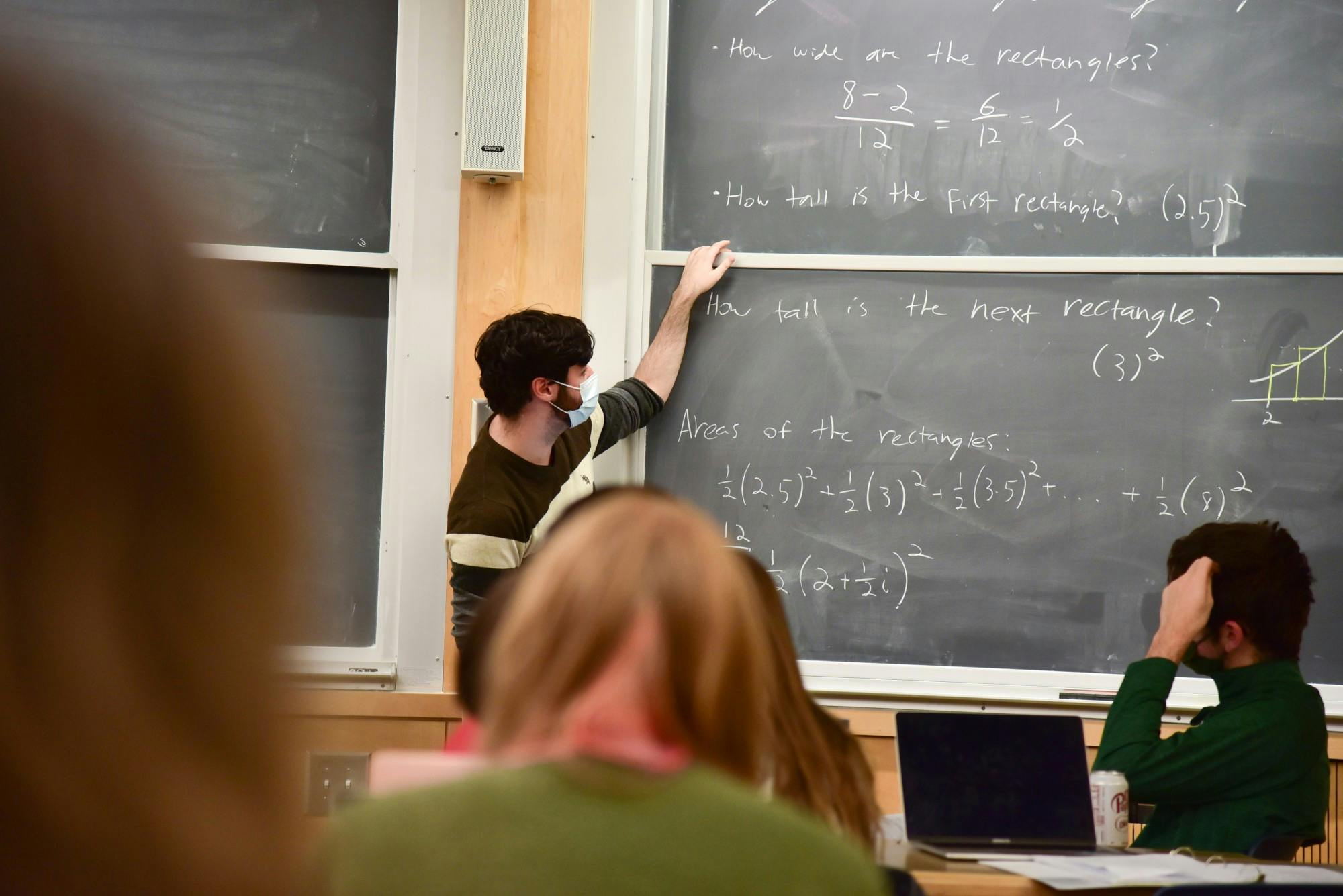As this fall term wraps up the first fully in-person term since winter 2020, faculty reflect on adapting their teaching from its online format in the past year to an in-person format.
Physics professor Robert Caldwell is currently teaching PHYS 77, “General Relativity,” a 20-student class. Caldwell said that student engagement is “totally different” than last year when he tried a mix of prerecorded lectures and live Zoom lectures: When he’s teaching in-person, he can “go off in a different direction, answer their questions and [the students] are more engaged.”
This term, everyone in the classroom remains masked. Although Caldwell said he hasn’t seen the bottom half of many of his students’ faces, teaching in-person still makes a “huge difference.”
“I can see their eyes,” Caldwell said. “I can tell if someone is not sure if they are looking right at me. I can tell if they want to ask a question. I can tell if they are following what I am saying or if they are lost, and then I can adjust based on that.”
Theater professor Peter Hackett shared similar sentiments, noting that moving back to in-person classes has made teaching “far more desirable than being on Zoom.” This fall term, he said, he directed two projects, “The First Year Project” and “Poor Clare,” which was part of the theater department’s Fall Staged Reading Series. Hackett said the department planned the series to be able to transition to an online format, since plans for fall term had yet to be finalized. He added that the transition back to in-person teaching has been integral to theater.
“Theater is a collaborative art form,” Hackett said. “It is really necessary that people be in the same room together, face to face.”
Many of the performers in both the First-Year Project and the Fall Staged Reading Series had not performed in two years, according to Hackett. He said that many were just happy to be performing live again.
Students were compliant with mask-wearing during rehearsal, likely because all were “so excited to be performing live that no one tried to break the rules,” Hackett said. The College has revised some of its COVID-19 protocols so that the performers now do not have to wear masks when actively performing, but must put them back on as they exit the stage, he added.
Mask wearing has affected disciplines across the College. Physics professor James LaBelle, who is teaching PHYS 13, “Introductory Physics” this fall term, noted that the mask mandate is an “impediment — there is no doubt about it.”
“I use a lot of humor in my class,” LaBelle said. “I think it still comes out [with the mask], but when you can’t have your face showing, I think it definitely affects how you can play the humor in the class.”
Lavelle said he took a sabbatical for much of last year to focus on his research and avoid remote teaching. When he did teach PHYS 14, “Introductory Physics II” in the spring of 2021 through live, synchronous Zoom lectures, his philosophy was “making this as close as possible to a regular class,” he said.
He added that during his course he had multiple cameras, one of which was operated by a department staff member to follow his movements during the lecture.
LaBelle estimated that last spring, a third of the labs in his course used real materials — either sent to students from the College or materials students had on hand — while the other two-thirds were virtual simulations. LaBelle added that he thought students made less use of office hours in the remote setting.
“Office hours were less populated, and probably less effective, too,” he said.
As for student engagement, LaBelle said that it isn’t “terribly different” between in-person and Zoom teaching. He said that while there may be more oral questions this fall, his students used the chat extensively last spring. Participation is about the same, he said, as students have merely switched classroom formats. LaBelle added that he has been continuing to offer his class over Zoom, as well, so students don’t feel pressure to come into class if they feel symptomatic.




